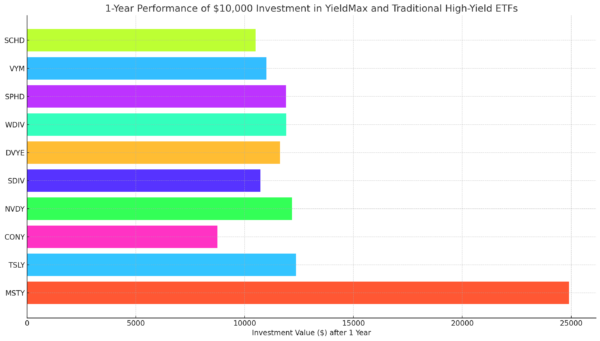Enterprise Products Partners Dividend: The Safest MLP on the Market
Below, Investment U’s Income Expert, Marc Lichtenfeld, takes a look at Enterprise Products Partners’ dividend safety.
Last week, I covered Energy Transfer (NYSE: ET), one of the most popular master limited partnerships (MLPs). Because of their high yields and tax efficiency, MLPs are a favorite of investors.
SafetyNet Pro currently rates the dividend safety of 10 MLPs.
Of these 10 companies, only two are rated “A” for distribution safety.
Today, I will cover the company that I consider to be the safest.
Enterprise Products Partners (NYSE: EPD) started in 1968 as a wholesaler of natural gas liquids. Today, it has 50,000 miles of pipelines, 260 million barrels of storage capacity and 22 natural gas processing plants.
Enterprise Products Partners’ cash available for distribution (CAD), a measure of cash flow for MLPs, has risen each year for the past three years. This year, CAD is forecast to decline.
However, even with the projected lower CAD, Enterprise can still easily cover the distribution (MLPs pay distributions, not dividends).
If Enterprise Products Partners hits the $6 billion in CAD that Wall Street expects, it will likely pay investors about 65% of that total in distributions.
Last year, the company paid just 58% of CAD in distributions.
Both numbers are figures I’m very comfortable with. They suggest that even if CAD falls further, the company generates enough cash to pay the distribution. Enterprise Products Partners’ dividend pays investors $0.445 per quarter, or $1.78 per year. That comes out to a 9.5% yield. The company has raised its distribution every year since it began paying one in 1998.
Enterprise Products Partners’ dividend pays investors $0.445 per quarter, or $1.78 per year. That comes out to a 9.5% yield. The company has raised its distribution every year since it began paying one in 1998.
That 22-year track record of annual payout increases, combined with a comfortable payout ratio, makes it easy to forgive the company’s expected lower CAD this year – especially since it still more than covers the distribution.
Many MLPs’ distributions are either on the chopping block or under consideration should things deteriorate further. Enterprise Products Partners’ distribution should be safe for the time being.
Enterprise Products Partners Dividend is Safe For Now
As you can see above, Enterprise Products Partners’ dividend is extremely safe at the moment. Therefore, you may want to keep a close eye on this company over the next few months.
For the latest investment trends and insight, sign up for the Wealthy Retirement e-letter below. You will gain access to daily investment tips and retirement strategies from our group of experts.
About Marc Lichtenfeld
Marc Lichtenfeld is the Chief Income Strategist of Investment U’s publisher, The Oxford Club. He has more than three decades of experience in the market and a dedicated following of more than 500,000 investors.
After getting his start on the trading desk at Carlin Equities, he moved over to Avalon Research Group as a senior analyst. Over the years, Marc’s commentary has appeared in The Wall Street Journal, Barron’s and U.S. News & World Report, among other outlets. Prior to joining The Oxford Club, he was a senior columnist at Jim Cramer’s TheStreet. Today, he is a sought-after media guest who has appeared on CNBC, Fox Business and Yahoo Finance.
Marc shares his financial advice via The Oxford Club’s free daily e-letter called Wealthy Retirement and a monthly, income-focused newsletter called The Oxford Income Letter. He also runs four subscription-based trading services: Technical Pattern Profits, Penny Options Trader, Oxford Bond Advantage and Predictive Profits.
His first book, Get Rich with Dividends: A Proven System for Earning Double-Digit Returns, achieved bestseller status shortly after its release in 2012, and the second edition was named the 2018 Book of the Year by the Institute for Financial Literacy. It has been published in four languages. In early 2018, Marc released his second book, You Don’t Have to Drive an Uber in Retirement: How to Maintain Your Lifestyle without Getting a Job or Cutting Corners, which hit No. 1 on Amazon’s bestseller list. It was named the 2019 Book of the Year by the Institute for Financial Literacy.







